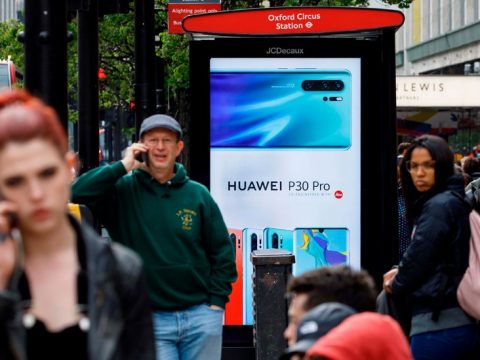
Here’s what you need to know:
Facebook’s Oversight Board, an independent and international panel that was created and funded by the social network, plans to announce on Wednesday whether former President Donald J. Trump will be able to return to the platform that has been a critical megaphone for him and his tens of millions of followers.
The decision will be closely watched as a template for how private companies that run social networks handle political speech, including the misinformation spread by political leaders.
At the time that Facebook barred Mr. Trump, the company’s chief executive, Mark Zuckerberg, wrote in a post: “We believe the risks of allowing the president to continue to use our service during this period are simply too great.”
Two weeks later, the company referred the case of Mr. Trump to Facebook’s Oversight Board for a final decision on whether the ban should be permanent. Facebook and the board’s members have said the panel’s decisions are binding, but critics are skeptical of the board’s independence. The panel, critics said, is a first-of-its-kind Supreme Court-like entity on online speech, funded by a private company with a poor track record of enforcing its own rules.
Facebook’s approach to political speech has been inconsistent. In October 2019, Mr. Zuckerberg declared the company would not fact check political speech and said that even lies by politicians deserved a place on the social network because it was in the public’s interest to hear all ideas by political leaders. But Mr. Trump’s comments on Jan. 6 were different, the company has said, because they incited violence and threatened the peaceful transition of power in elections.
On Monday, Mr. Trump continued to deny the election results.
“The Fraudulent Presidential Election of 2020 will be, from this day forth, known as THE BIG LIE!” he said in an emailed statement.
Jerome H. Powell, the Federal Reserve chair, struck a hopeful tone about the United States economy in a speech on Monday — but he emphasized that the economic fallout from the coronavirus pandemic has disproportionately harmed vulnerable communities.
“While some countries are still suffering terribly in the grip of Covid-19, the economic outlook here in the United States has clearly brightened,” Mr. Powell said. And in the United States, “lives and livelihoods have been affected in ways that vary from person to person, family to family, and community to community.”
Mr. Powell used the remarks to preview an upcoming Fed report that will show how Black and Hispanic workers lost jobs at a greater rate in pandemic lockdowns and how the pandemic pushed mothers out of the labor force and made it harder for people without college degrees to hang onto work.
Among the statistics he highlighted from the Survey of Household Economics and Decisionmaking, which he said will be released later this month:
-
About 20 percent of adults in their prime working years without a bachelor’s degree were laid off last year, compared to 12 percent of college-educated workers.
-
More than 20 percent of Black and Hispanic prime-age workers were laid off in 2020, versus 14 percent of white workers.
-
Roughly 22 percent of parents were not working or were working less thanks to child-care and school disruptions.
-
About 36 percent of Black mothers, and 30 percent of and Hispanic mothers, were not working or were working less.
“The Fed is focused on these longstanding disparities because they weigh on the productive capacity of our economy,” Mr. Powell said. “We will only reach our full potential when everyone can contribute to, and share in, the benefits of prosperity.”
Mr. Powell said that while achieving an equitable economy is the job of many parts of government, the Fed has a role to play with both its economic tools and in its bank supervision and community development work.
“Those who have historically been left behind stand the best chance of prospering in a strong economy with plentiful job opportunities,” Mr. Powell said. “We see our robust supervisory approach as critical to addressing racial discrimination, which can limit consumers’ ability to improve their economic circumstances.”

John C. Williams, the president of the powerful Federal Reserve Bank of New York, said the economy is bouncing back from pandemic shutdowns, but that it has not yet healed enough to prod central bankers to adjust their policy stance.
“It’s clear there is a big shift in the economy, and the outlook has improved,” Mr. Williams said during a speech on Monday afternoon. “But let me emphasize that the data and conditions we are seeing now are not nearly enough” for the Fed’s policy-setting committee “to shift its monetary policy stance.”
Mr. Williams, who is the only of the 12 regional Fed bank presidents to hold a constant vote on central bank interest rate policy and who is as a close adviser to Jerome H. Powell, the Fed chair, emphasized that the Fed is watching for the economy to get closer to its price-stability and full-employment goals before officials begin to pull back their support for the United States economy. The Fed is buying about $120 billion in bonds each months and holding interest rates near zero to make many types of household and business borrowing inexpensive, encouraging spending and lending and bolstering growth.
The Fed kept those policies intact at its meeting last week and made it clear that economic risks remained.
“Let’s not forget that there are about eight and a half million fewer jobs today than before the pandemic,” Mr. Williams said Monday. “To put that number in context, this is a shortfall similar to what we saw at the worst point of the aftermath of the Great Recession.”
Mr. Williams added that “it is important not to overreact” to slightly higher inflation at a time when pandemic-tied bottlenecks and other trends are expected to push prices higher in the near term. His comments come as some economists warn that price gains could pop higher, goosed by big government spending and rebounding consumer demand. Many Fed officials have played down that threat, saying they would not fret over a short-term bounce.
The New York Fed chief spoke as Mr. Powell was delivering remarks at a separate event. While Mr. Powell’s comments were more tightly focused on disparities in the economy, he, too, emphasized that the economy still has room to heal.
“We are not out of the woods yet,” Mr. Powell said, though he added that he was “glad to say that we are now making real progress.”

Restaurants, bars, caterers and other food businesses devastated by the pandemic began applying Monday for help from a new $28.6 billion federal aid program, but the money isn’t expected to last long.
Despite a few delays and glitches after thousands descended on the application website for the Restaurant Revitalization Fund when it went live at noon, the process was fairly straightforward, applicants said.
That was a welcome change from the technical problems that have plagued other aid programs run by the Small Business Administration, which is managing the restaurant fund.
“It was impressively smooth,” said Sarah Horak, who co-owns three bars and restaurants in Grand Forks, N.D. She was able to submit her first application just 10 minutes after she logged on to the website.
Congress created the restaurant fund as part of the $1.9 trillion relief bill passed in March. For the first 21 days, the Small Business Administration will approve claims exclusively from businesses that are majority-owned by people who fall into one of the priority groups designated by legislators: women, veterans and individuals who qualify as both socially and economically disadvantaged.
That latter group includes those who meet certain income and asset limits and are Black, Hispanic, Native American, Asian-Pacific American or South Asian American, the agency said.
Applicants from those groups will be asked to certify their own eligibility for the exclusivity period. That three-week priority period alone is likely to exhaust the fund.
The money allocated by Congress “is probably not going to be enough funds, in all likelihood, for the demand that’s out there,” Patrick Kelley, who runs the S.B.A.’s Capital Access office, acknowledged on a webinar last week. He said he hoped Congress would provide more money as needed.
The fund offers grants of up to $10 million. The amount each business can receive equals the difference between its 2019 and 2020 gross receipts, minus certain other federal assistance such as loans from the Paycheck Protection Program.
Ms. Horak racked up more than $300,000 in debt last year to keep her restaurants afloat. She is hoping to use the grant money to pay off those loans and hire additional staff as customers return to her newly reopened businesses.
“We are seeing some positive tends in traffic, but it’s still not anywhere near normal,” she said.
Applicants who aren’t eligible during the priority period are waiting nervously to see if anything will be left for them. Jeremy Yoder and his wife, Barbie Yoder, opened the Alaska Crepe Co., in Ketchikan, Alaska, in 2019. He applied Monday for a grant.
“We’ve had to learn to run really lean this past year,” Mr. Yoder said. The Yoders’ business depends heavily on cruise visitors, and this year — like last year — could be a near-total loss on the tourism front.
Mr. Yoder took a full-time tech industry job last year to support his family and business. “We’re making enough to keep the doors open, but we’re certainly not profitable,” he said. “We’re losing money every day we’re open.”
Tamra Patterson, the owner of Chef Tam’s Underground Cafe in Memphis, was still trying to complete her application late on Monday afternoon. She made it through several steps but then got a message saying her responses had failed the agency’s “knowledge based authentication” check.
The S.B.A. said in a Twitter post that it was having trouble with that portion of the application process. “Your place in line is reserved and you will be able to complete your application shortly,” it informed those experiencing problems.
Ms. Patterson, who is Black, said she had not been approved for any other federal aid programs, including the Paycheck Protection Program. “Every time I tried to apply I ran into some type of hiccup,” she said.
Ms. Patterson’s restaurant had sales of more than $1 million in 2019, she said. Right before the pandemic, she moved her once-tiny businesses to a much larger, 7,000-square foot space and expanded her staff to 38 employees.
She had to lay off nearly all of them after the pandemic took hold. Takeout and delivery brought in some revenue, but her sales last year were down by at least 80 percent, she said.
Ms. Patterson is hoping the grant will buy her business some breathing room. She wants to give her 11 workers — who have been running “nonstop,” she said — some time off and to catch up on bills, like the payments she owes to her food vendors and other creditors.
“Just being able to pay my rent in full and on time would be amazing,” she said.
The Small Business Administration said its goal was to respond to applicants within 14 days. Officials did not respond to questions on Monday afternoon about how many applications had been received.
This is the second grant program the agency has launched recently. Last week, it began taking applications for the Shuttered Venue Operators Grant, a $16 billion relief fund for theaters, music clubs and other live event businesses. Nearly 9,500 businesses applied for that relief on the program’s first day, but the agency has not yet issued any grant decisions.

Apple and Epic Games, maker of the wildly popular game Fortnite, are set to square off on Monday in a trial that could decide how much control Apple can exert over the app economy. The trial is scheduled to open with testimony from Tim Sweeney, the chief of Epic, on why he believes Apple is a monopoly abusing its power.
The trial, which is expected to last about three weeks, carries major implications, Jack Nicas and Erin Griffith report in The New York Times. If Epic wins, it will upend the economics of the $100 billion app market and create a path for millions of companies and developers to avoid sending up to 30 percent of their app sales to Apple.
An Epic victory would also invigorate the antitrust fight against Apple. Federal and state regulators are scrutinizing Apple’s control over the App Store, and on Friday, the European Union charged Apple with violating antitrust laws over its app rules and fees. Apple faces two other federal lawsuits about its App Store fees — one from developers and one from iPhone owners — that are seeking class-action status.
Beating Apple would also bode well for Epic’s coming trial against Google over the same issues on the app store for Android devices. That case is expected to go to trial this year and would be decided by the same federal judge, Yvonne Gonzalez Rogers of the Northern District of California.
If Apple wins, however, it will strengthen its grip over mobile apps and stifle its growing chorus of critics, further empowering a company that is already the world’s most valuable and topped $200 billion in sales over just the past six months.
By: Ella Koeze·Data delayed at least 15 minutes·Source: FactSet
-
The S&P 500 rose 0.3 percent on Monday, while the Nasdaq composite dropped 0.5 percent as some major tech stocks fell.
-
Shares of Amazon dropped 2.3 percent. Tesla was down 3.5 percent, and Microsoft and Alphabet also ended the day lower.
-
Markets were closed in London for a bank holiday, and trading overall was subdued as some countries marked the May Day holiday. The Stoxx Europe 600 index climbed 0.6 percent. In Asia, indexes ended the day lower.
Inflation pressures
-
Investors may have inflation on their minds after the investor Warren E. Buffett, speaking at the Berkshire Hathaway annual shareholders meeting on Saturday, said the
cost of construction materials was rising. -
Indeed, commodity shortages in several industries, including construction, are causing price increases, Alan Rappeport and Thomas Kaplan report in The New York Times. The stresses are the result of rising demand running up against supply chain disruptions and Trump-era tariffs.
-
Although the Federal Reserve has described the price increases as temporary and unlikely to spiral out of control, pressure on the Biden administration to intervene could grow as it seeks a $2 trillion infrastructure investment package, a price tag that could rise as the cost of building roads, bridges and electric vehicle charging stations increase.
European manufacturers get healthier
-
European manufacturing companies are signaling “considerable increases in output and new orders,” according to the IHS Markit purchasing manager’s index report for April.
-
The seasonally adjusted index hit 62.9 points, the highest ever since the survey data become available in 1997, IHS Markit said Monday.
As the post-pandemic economic recovery ramps up, prices are going up on goods as varied as toilet paper, diapers and wood flooring — and the increases may soon be felt in consumers’ wallets.
Procter & Gamble is raising prices on items like Pampers and Tampax in September. Kimberly-Clark said in March that it would raise prices on Scott toilet paper, Huggies and Pull-Ups in June, a move that is “necessary to help offset significant commodity cost inflation.”
And General Mills, which makes cereal brands including Cheerios, is facing increased supply-chain and freight costs “in this higher-demand environment,” the company’s chief financial officer, Kofi Bruce, said recently.
These price increases reflect what some economists are calling a major shift in the way companies have responded to demand during the pandemic, Gillian Friedman reports in The New York Times.
Before the virus hit, retailers often absorbed the cost when suppliers raised prices on goods, because stiff competition forced retailers to keep prices stable. The pandemic changed that.

The people who profit off corporate America’s use of offices are trying to coax corporate America back to the office.
They have refined their sales pitches to play up air filtration systems, flexible lease terms and swing space and brokers are back in their own workplaces in force. They are acknowledging that some things have changed while also seeking to prove to their clients, and themselves, that the office will soon return to something close to what it was, Rebecca R. Ruiz reports in The New York Times.
With New York City set to reopen fully in July, and many companies expecting to summon workers back this summer and fall, those in commercial real estate are hoping that the rebirth they’ve tried to hasten may finally happen.
“We opened our offices as soon as we were allowed across the country,” said David Lipson, a vice chairman for Savills, a global brokerage firm. “If you’re in the office real-estate business, should you be comfortable getting too comfortable working from home?”
The industry, coming off a boom of continuous growth, has seen commissions fall off as vacancy rates have climbed to their highest levels in decades. Real estate executives, characteristically bullish on their prospects, are facing existential questions.
With 1.3 billion square feet of office space available across America’s top markets — and more now on the market in Manhattan than exists in all of Nashville, Orlando or San Antonio, according to the research firm CoStar — strains in rosy projections are showing.
Today in the On Tech newsletter, Shira Ovide talks to Dai Wakabayashi about what Google learned from the last year of employees working mostly away from offices, and whether a company with limitless resources will be a model of the future workplace.
















